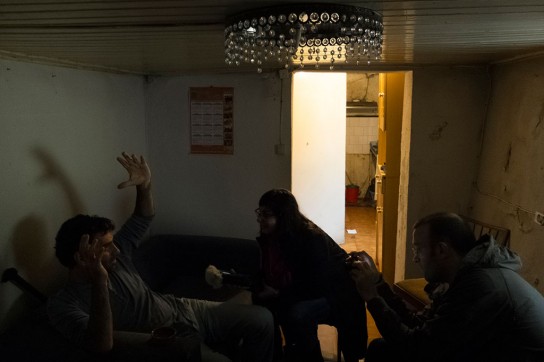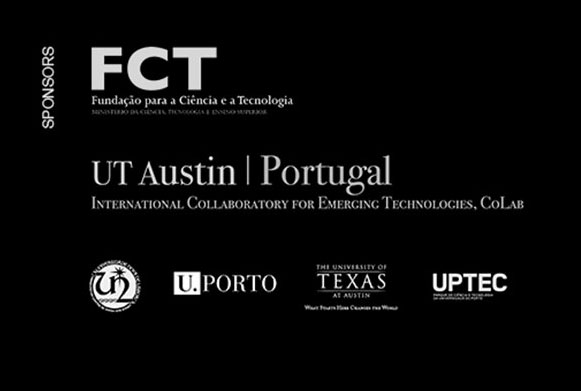
Traditional knowledge and oral memory are an important part of our story, it’s intangible heritage. In the age of Digital possibilites let’s make sense of memories and narratives, providing basic techniques on how to tell a story. So the aim of this workshop was to introduce storytelling/interview audio+visual techniques to participants in order to share a story that makes sense based on memories, regarding personal narratives, a certain place or experience.
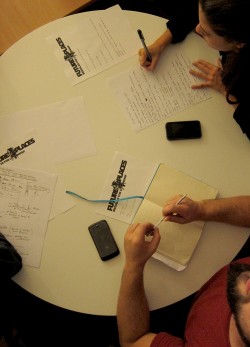
At the end of the lab, participants had:
mini-documentaries
increased storytelling abilities
Target participants
All welcome.
DEBRIEFING
>The proposal and the plan
The objective of this workshop was to share the main guidelines on how to tell stories on video, audio, photography and rescue oral memory from the inhabitants of the ilha da Bela Vista, Porto. We chose this place as it is going through an urban rehabilitation with the help of a team of young architects, anthropologists and social workers. Therefore this seemed to be an important moment in time to ransom testimonies of how life is and used to be in this “ilha”, the stories, daily life, ambitions, ways of thinking: the main fabric of a city’s DNA.
In the first part of the workshop participants learned basic audio+visual and interview techniques in order to give linear logic and interest to the narratives. Afterwards they went on fieldwork in ilha of Bela Vista, to record personal narratives to convert in a maximum 3 minute piece, where they had to apply the newly acquired skills. In the last part, participants edited and shared their stories in a blog created to aggregate all the content: http://doc4citizens.tumblr.com/
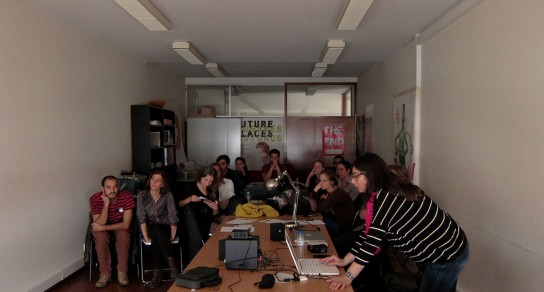
> Preparing the field
To conduct this Citizen Lab in 2 days it was imperative to prepare the field for the participants in order to surpass an important step that always demands time on a pre-production level: research and territory recognition. Thus we visited 3 times the community in September and October before we took the participants to record there. The idea was not only to know the place where we would be working at, but also to get to know the people, the atmosphere and share with them our main intentions. We had the precious help of two social workers, Ana Vieira and Inês Lima, the architect Nicolau Brandão, and also the cooperation of Armando Luís, one of the inhabitants.
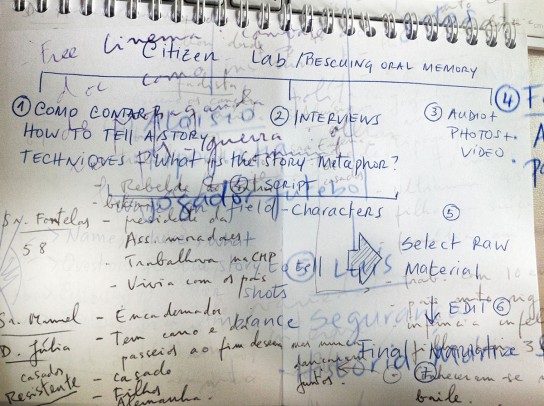
> The Lab sessions
Oct. 16 (morning)
Introduced the participants to basic interview and storytelling audiovisual techniques. Exhibited a showcase and analysis of a set of examples.
Presented the main characters that will serve as subjects for the mini-docs.
Distribution of participants on groups of 2 to 3 elements. Each group would be focused on a certain character.
Oct. 16 (afternoon)
Fieldwork, starting at 3 p.m, Bela Vista. (It was raining cats and dogs!)
Some interviews lasted more than one hour, others were more concise.
At the end, and after a 3 hours session, the participants gathered together several hours of footage, which had to be organised in order to ease the editing process in the following session.
Oct. 17 (afternoon)
In a very quick editing session (2 hours long), the participants had to build a short video or audio narrative.
At the end of this session, some of the mini-docs were in a very final set and others are still in an ongoing editing process:
“Sr. Aloísio” by André Rocha e Ana Patrícia dos Santos
“Dona Ana, a fadista” by Daniel Correia e Maria João
“Manuel e Júlia” by Ana Clara Roberti, Priscilla Davanzo and Tiago dos Santos
“Dona Rosa a Radical” by Maria Camps and Wouter De Broeck
Rosa Radical da Ilha da Bela Vista [áudio por Maria Camps e Wouter de Broueck] by Doc4citizens on Mixcloud
“Luís Belavista” by Daniel Brandão, Joana Costa and Vanessa Rodrigues
“Dona Eugénia” by Ricardo Coelho, Rita Costa and Rute Febra
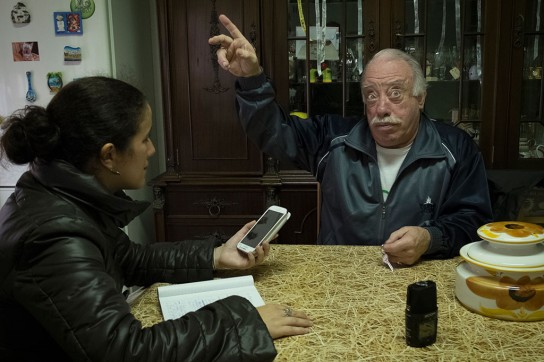
> Main Conclusions
– The final results amazed us, as time was very constrained. This was mainly due to the commitment of all participants. Not only in the field while interviewing and recording, but also in the edition process where all of them dedicated extra time to finish all the short documentaries. Even though we gave a limit of 3 minutes for the narratives, the majority of the participants exceeded that limit presenting narratives of 5 minutes in average.
– Participants were truly engaged with the community from Bela Vista. We had situations where the inhabitants invited the participants to stay longer and come back, even though at the beginning they were still somehow reluctant about the recordings;
– We’ve realized that this Citizen Lab was a success also because the majority of the participants were familiar to video and audio recording and editing;
– Since the beginning of our partnership (Vanessa+Daniel) we have been discussing the potential of this project and the interest we had in common to extend it to other ilhas. This interest was also spontaneously shared by the majority of the participants without acknowledge our further intentions. A new project has thus quickly emerged from the Lab;
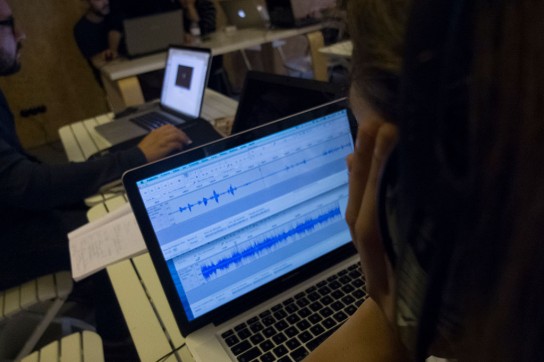
> Further developments – doc4citizens / citizen docs
We have realized that the participants wanted to improve the final mini-docs. Therefore we invited them for a debriefing meeting one week after the Lab, to watch the final narratives and discuss future possibilities for the project. This meeting was divided then into three parts:
Part 1: Analysis of the mini-docs (one by one) and review on the technical details to be improved. All of them should have: a title at the beginning (name of the characters that were the film subject), credits at the end (directed by) and a final packshot showing the logo of the project and the futureplaces logo. We have also found out the need to create an online archive for sharing the footage between every group as it may help in filling some gaps in the visual narrative.
Part 2: A list of specific upcoming tasks (finish the final editing of the mini-docs, design the project’s logo, update the project’s blog with a statement + team of participants + logos, disseminate the project online)
Part 3: Potential developments in the future:
– Transform the project in a collaborative platform where different interests intersect: researchers (urbanism, anthropology, ethnography, sociology, cultural studies), documentary filmmakers, visual artists and designers, citizens, etc
– Create new themes/contexts (other ilhas, other areas in the city, nursing homes, our own family stories, etc)
– Create a feature collaborative documentary by connecting the different mini-docs (build a script that establish connections between the main topics in each interview)
– Designate a member (participant) responsible for each specific area of the project in order to keep them engaged with it.
